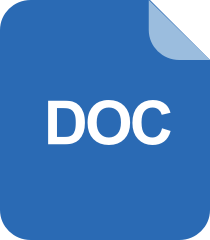
IEC 61850-7-1
Edition 2.0 2011-07
INTERNATIONAL
STANDARD
NORME
INTERNATIONALE
Communication networks and systems for power utility automation –
Part 7-1: Basic communication structure – Principles and models
Réseaux et systèmes de communication pour l'automatisation des systèmes
électriques –
Partie 7-1: Structure de communication de base – Principes et modèles
IEC 61850-7-1:2011
®
colour
inside

THIS PUBLICATION IS COPYRIGHT PROTECTED
Copyright © 2011 IEC, Geneva, Switzerland
All rights reserved. Unless otherwise specified, no part of this publication may be reproduced or utilized in any form or by
any means, electronic or mechanical, including photocopying and microfilm, without permission in writing from either IEC or
IEC's member National Committee in the country of the requester.
If you have any questions about IEC copyright or have an enquiry about obtaining additional rights to this publication,
please contact the address below or your local IEC member National Committee for further information.
Droits de reproduction réservés. Sauf indication contraire, aucune partie de cette publication ne peut être reproduite
ni utilisée sous quelque forme que ce soit et par aucun procédé, électronique ou mécanique, y compris la photocopie
et les microfilms, sans l'accord écrit de la CEI ou du Comité national de la CEI du pays du demandeur.
Si vous avez des questions sur le copyright de la CEI ou si vous désirez obtenir des droits supplémentaires sur cette
publication, utilisez les coordonnées ci-après ou contactez le Comité national de la CEI de votre pays de résidence.
IEC Central Office
3, rue de Varembé
CH-1211 Geneva 20
Switzerland
Email: inmail@iec.ch
Web: www.iec.ch
About the IEC
The International Electrotechnical Commission (IEC) is the leading global organization that prepares and publishes
International Standards for all electrical, electronic and related technologies.
About IEC publications
The technical content of IEC publications is kept under constant review by the IEC. Please make sure that you have the
latest edition, a corrigenda or an amendment might have been published.
Catalogue of IEC publications: www.iec.ch/searchpub
The IEC on-line Catalogue enables you to search by a variety of criteria (reference number, text, technical committee,…).
It also gives information on projects, withdrawn and replaced publications.
IEC Just Published: www.iec.ch/online_news/justpub
Stay up to date on all new IEC publications. Just Published details twice a month all new publications released. Available
on-line and also by email.
Electropedia: www.electropedia.org
The world's leading online dictionary of electronic and electrical terms containing more than 20 000 terms and definitions
in English and French, with equivalent terms in additional languages. Also known as the International Electrotechnical
Vocabulary online.
Customer Service Centre: www.iec.ch/webstore/custserv
If you wish to give us your feedback on this publication or need further assistance, please visit the Customer Service
Centre FAQ or contact us:
Email: csc@iec.ch
Tel.: +41 22 919 02 11
Fax: +41 22 919 03 00
A propos de la CEI
La Commission Electrotechnique Internationale (CEI) est la première organisation mondiale qui élabore et publie des
normes internationales pour tout ce qui a trait à l'électricité, à l'électronique et aux technologies apparentées.
A propos des publications CEI
Le contenu technique des publications de la CEI est constamment revu. Veuillez vous assurer que vous possédez
l’édition la plus récente, un corrigendum ou amendement peut avoir été publié.
Catalogue des publications de la CEI: www.iec.ch/searchpub/cur_fut-f.htm
Le Catalogue en-ligne de la CEI vous permet d’effectuer des recherches en utilisant différents critères (numéro de référence,
texte, comité d’études,…). Il donne aussi des informations sur les projets et les publications retirées ou remplacées.
Just Published CEI: www.iec.ch/online_news/justpub
Restez informé sur les nouvelles publications de la CEI. Just Published détaille deux fois par mois les nouvelles
publications parues. Disponible en-ligne et aussi par email.
Electropedia: www.electropedia.org
Le premier dictionnaire en ligne au monde de termes électroniques et électriques. Il contient plus de 20 000 termes et
définitions en anglais et en français, ainsi que les termes équivalents dans les langues additionnelles. Egalement appelé
Vocabulaire Electrotechnique International en ligne.
Service Clients: www.iec.ch/webstore/custserv/custserv_entry-f.htm
Si vous désirez nous donner des commentaires sur cette publication ou si vous avez des questions, visitez le FAQ du
Service clients ou contactez-nous:
Email: csc@iec.ch
Tél.: +41 22 919 02 11
Fax: +41 22 919 03 00

IEC 61850-7-1
Edition 2.0
2011-07
INTERNATIONAL
STANDARD
NORME
INTERNATIONALE
Communication networks and systems for power utility automation –
Part 7-1: Basic communication structure – Principles and models
Réseaux et systèmes de communication pour l'automatisation des systèmes
électriques –
Partie 7-1: Structure de communication de base – Principes et modèles
INTERNATIONAL
ELECTROTECHNICAL
COMMISSION
COMMISSION
ELECTROTECHNIQUE
INTERNATIONALE
XG
ICS 33.200
PRICE CODE
CODE PRIX
ISBN 978-2-88912-555-5
® Registered trademark of the International Electrotechnical Commission
Marque déposée de la Commission Electrotechnique Internationale
®
colour
inside

– 2 – 61850-7-1 IEC:2011
CONTENTS
FOREWORD ........................................................................................................................... 8
INTRODUCTION ................................................................................................................... 10
1
Scope ............................................................................................................................. 11
2 Normative references ..................................................................................................... 12
3 Terms and definitions ..................................................................................................... 13
4 Abbreviated terms .......................................................................................................... 13
5 Overview of the IEC 61850 series concepts .................................................................... 14
5.1 Objective ............................................................................................................... 14
5.2 Topology and communication functions of substation automation systems ............ 16
5.3 The information models of substation automation systems .................................... 16
5.4 Applications modelled by logical nodes defined in IEC 61850-7-4 .......................... 18
5.5 The semantic is attached to data ........................................................................... 21
5.6 The services to exchange information ................................................................... 23
5.7 Services mapped to concrete communication protocols ......................................... 24
5.8 The configuration of the automation system .......................................................... 25
5.9 Summary ............................................................................................................... 26
6 Modelling approach of the IEC 61850 series ................................................................... 27
6.1 Decomposition of application functions and information ......................................... 27
6.2 Creating information models by stepwise composition ........................................... 28
6.3 Example of an IED composition ............................................................................. 31
6.4 Information exchange models ................................................................................ 31
6.4.1 General ..................................................................................................... 31
6.4.2 Output model ............................................................................................. 33
6.4.3 Input model ............................................................................................... 36
6.4.4 Model for statistical and historical statistical data ...................................... 46
6.4.5 Model for system functions ........................................................................ 50
7 Application view ............................................................................................................. 52
7.1 General ................................................................................................................. 52
7.2 First modelling step – Logical nodes and data ....................................................... 53
7.3 Mode and behaviour of a logical node ................................................................... 57
7.4 Use of measurement ranges and alarms for supervision functions ......................... 57
7.5 Data used for limiting the access to control actions ............................................... 58
7.6 Data used for blocking functions described by logical nodes ................................. 58
7.7 Data used for logical node inputs/outputs blocking (operational blocking) .............. 58
7.7.1 General ..................................................................................................... 58
7.7.2 Blocking incoming commands .................................................................... 59
7.7.3 Blocking process outputs ........................................................................... 59
7.7.4 Blocking oscillating inputs.......................................................................... 60
7.8 Data used for testing ............................................................................................. 60
7.8.1 General ..................................................................................................... 60
7.8.2 Multicast signals used for simulation ......................................................... 60
7.8.3 Input signals used for testing ..................................................................... 61
7.8.4 Test mode ................................................................................................. 62
7.9 Logical node used for extended logging functions ................................................. 62
8 Device view .................................................................................................................... 63
8.1 General ................................................................................................................. 63

61850-7-1 IEC:2011 – 3 –
8.2
Second modelling step – logical device model ....................................................... 64
8.2.1 The logical device concept ........................................................................ 64
8.2.2 The device nameplate ............................................................................... 65
8.2.3 Gateways and proxies ............................................................................... 66
8.2.4 Logical devices for monitoring external device health ................................ 67
8.2.5 Logical devices management hierarchy ..................................................... 68
9 Communication view ....................................................................................................... 70
9.1 General ................................................................................................................. 70
9.2 The service models of the IEC 61850 series .......................................................... 70
9.3 The virtualisation ................................................................................................... 72
9.4 Basic information exchange mechanisms .............................................................. 73
9.5 The client-server building blocks ........................................................................... 75
9.5.1 Server ....................................................................................................... 75
9.5.2 Client-server roles ..................................................................................... 76
9.6 Logical nodes communicate with logical nodes ...................................................... 77
9.7 Interfaces inside and between devices .................................................................. 78
10 Where physical devices, application models and communication meet ........................... 79
11 Relationships between IEC 61850-7-2, IEC 61850-7-3 and IEC 61850-7-4 ..................... 80
11.1 Refinements of class definitions ............................................................................ 80
11.2 Example 1 – Logical node and data class .............................................................. 81
11.3 Example 2 – Relationship of IEC 61850-7-2, IEC 61850-7-3, and IEC 61850-7-4 ... 85
12 Formal specification method ........................................................................................... 86
12.1 Notation of ACSI classes ....................................................................................... 86
12.2 Class modelling ..................................................................................................... 87
12.2.1 Overview ................................................................................................... 87
12.2.2 Common data class ................................................................................... 88
12.2.3 Logical node class ..................................................................................... 91
12.3 Service tables ....................................................................................................... 92
12.4 Referencing instances ........................................................................................... 93
13 Name spaces ................................................................................................................. 96
13.1 General ................................................................................................................. 96
13.2 Name spaces defined in the IEC 61850-7-x series ................................................. 97
13.3 Specification of name spaces .............................................................................. 101
13.3.1 General ................................................................................................... 101
13.3.2 Specification ............................................................................................ 101
13.4 Attributes for references to name spaces ............................................................ 102
13.4.1 General ................................................................................................... 102
13.4.2 Attribute for logical device name space (ldNs) ......................................... 103
13.4.3 Attribute for logical node name space (lnNs)............................................ 103
13.4.4 Attribute for data name space (dataNs) ................................................... 104
13.4.5 Attribute for common data class name space (cdcNs) .............................. 104
14 Common rules for new version of classes and for extension of classes......................... 104
14.1 General ............................................................................................................... 104
14.2 Basic rules .......................................................................................................... 104
14.3 Rules for LN classes ........................................................................................... 105
14.3.1 Use of standardized LN classes ............................................................... 105
14.3.2 Extensions to standardized LN classes made by third parties .................. 106
14.3.3 New LN classes ....................................................................................... 106

















